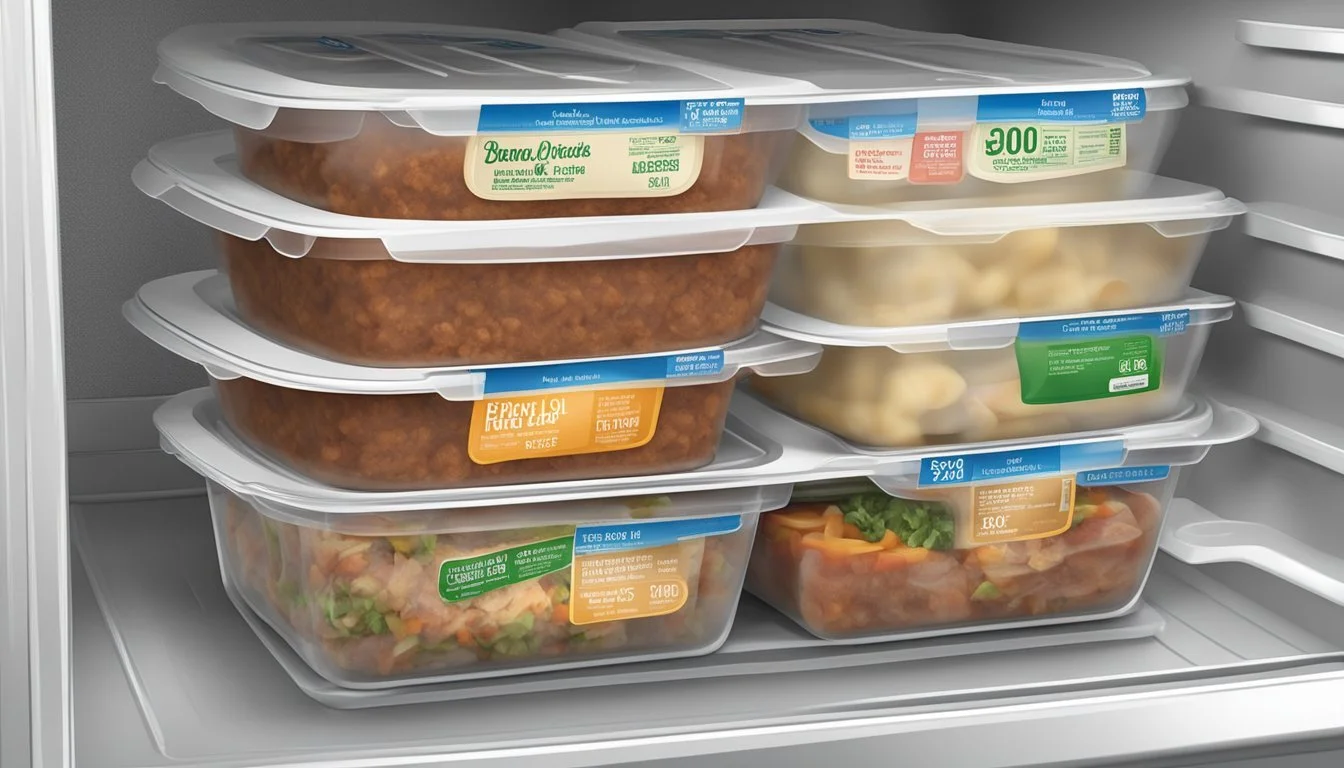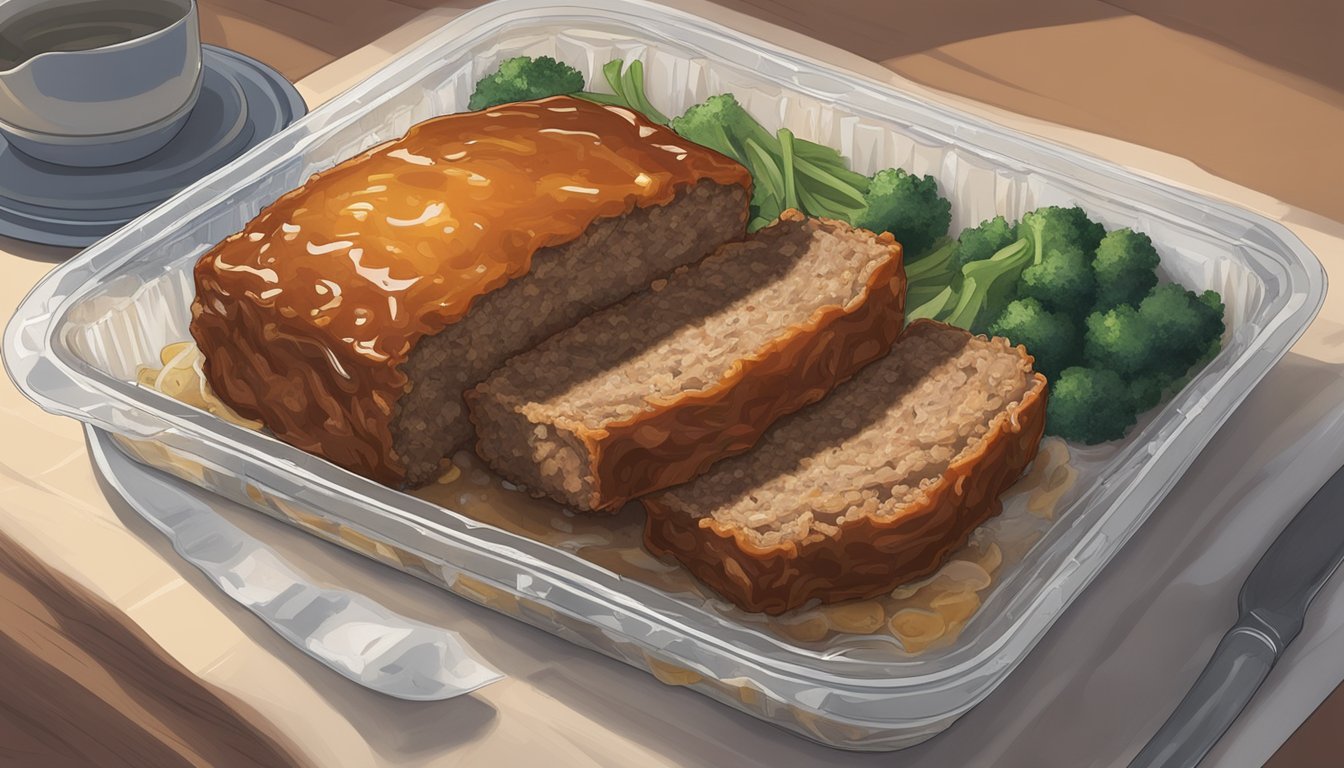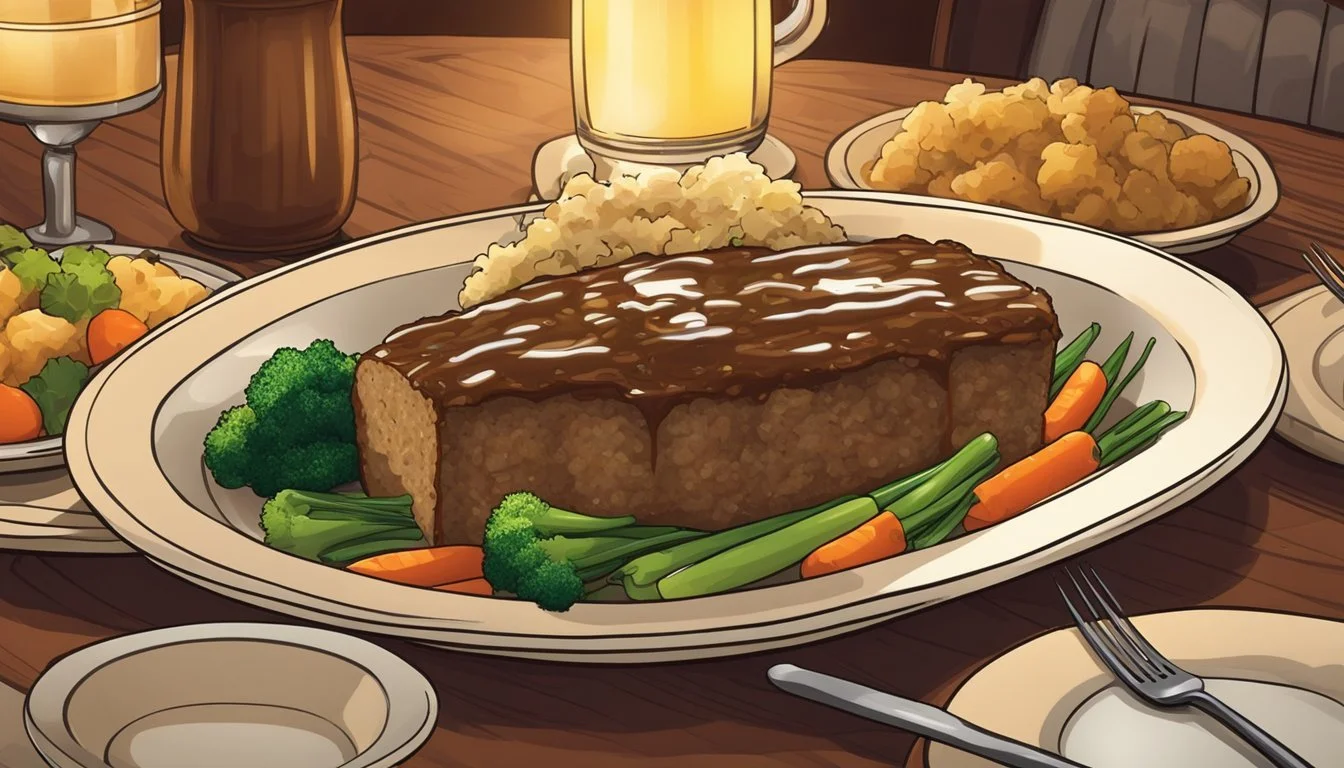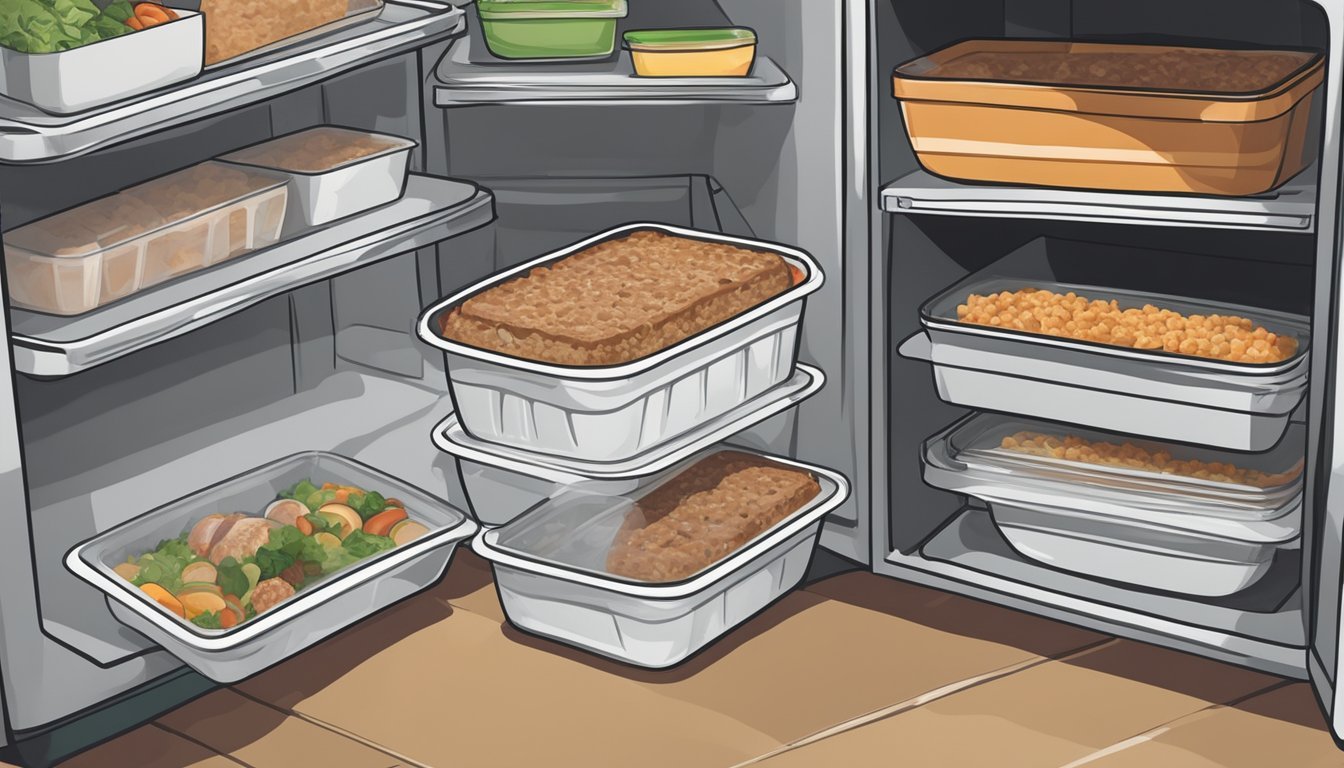How Long Does Banquet Meatloaf Meal Last?
Storage and Shelf Life Insights
Understanding the shelf life and storage of Banquet Meatloaf Meals is essential for ensuring both food safety and the best dining experience. Generally, a frozen Banquet Meatloaf Meal can last up to 18 months in the freezer if it is kept at a constant temperature of 0°F (-18°C). This makes it a convenient option for those looking for quick and easy meals that don't require immediate consumption.
Unopened, these frozen meals should be stored in a freezer to maintain their quality and safety. Once thawed, it's crucial not to refreeze them as it can negatively impact both texture and taste while also increasing the risk of foodborne illnesses. Always refer to the storage instructions on the packaging to ensure you're following the best practices.
If the meatloaf meal has been prepared and there are leftovers, they should be refrigerated within two hours of cooking and consumed within three to four days. By adhering to these guidelines, you can enjoy Banquet Meatloaf Meals safely and deliciously.
Understanding Meatloaf
Meatloaf is a classic dish made from a combination of ground meats mixed with various ingredients, bound together, and baked. This section covers the essential aspects of meatloaf, including its ingredients, preparation steps, and nutritional profile.
Ingredients and Preparation
Meatloaf typically includes ground beef as the primary ingredient. Other common components are breadcrumbs, which help bind the mixture, and eggs, which contribute to the structure. Onions add flavor and moisture, while seasonings like salt, pepper, and sometimes herbs or spices enhance the taste.
In some recipes, milk or wine might be used to add moisture and richness. The mixture is formed into a loaf shape and baked. Variations can include different meats like pork or turkey or additional ingredients such as vegetables or cheese.
Nutrition Profile
Meatloaf provides a balance of macronutrients. A serving typically delivers a significant amount of protein from the ground beef and eggs. The addition of breadcrumbs and milk can contribute carbohydrates, while the fat content varies based on the ground meat's fat percentage.
Important micronutrients include iron, vitamin B12, and zinc from the beef, and vitamins and minerals from added vegetables. The exact nutritional values depend on the specific recipe used, but meatloaf generally offers a hearty, nutrient-dense meal option.
Here's an example nutritional breakdown for a standard serving of meatloaf:
Nutrient Amount Calories 260 Protein 20g Fat 16g Carbohydrates 10g Iron 2.5mg
Initial Storage Guidelines
Properly storing Banquet meatloaf is essential to maintain its quality and safety. Key considerations include the appropriate refrigeration and freezing techniques.
Refrigeration Requirements
To maximize the shelf life of Banquet meatloaf, it should first be cooled to room temperature. It is crucial to refrigerate the meatloaf within two hours of cooking to prevent bacterial growth.
For best results, use an airtight container, aluminum foil, or plastic wrap to store the meatloaf. The refrigerator should be maintained at a temperature of 40°F (4°C) or below. Properly stored, refrigerated Banquet meatloaf can remain fresh for 3 to 4 days.
Make sure to label any stored meatloaf with the date for easy tracking.
Freezing and Thawing
For extended storage, freezing Banquet meatloaf is recommended. The meatloaf should be tightly wrapped in freezer-safe wrap or aluminum foil, or placed in a freezer-safe container. The freezer temperature should be kept at 0°F (-18°C) or lower.
Label the meatloaf with the freezing date to monitor storage time. Frozen Banquet meatloaf can last up to 3-4 months without significant loss of quality.
When ready to use, thaw the meatloaf in the refrigerator to ensure it remains at a safe temperature throughout the process. This method typically takes several hours or overnight. For quicker thawing, using the microwave is an option, though it may affect texture slightly.
Maximizing Freshness
Proper storage and temperature control are essential for ensuring the longevity and quality of a Banquet meatloaf meal.
Airtight Storage
The use of airtight containers is critical in maintaining the freshness of a Banquet meatloaf meal. An airtight container helps to lock in moisture and prevent the meatloaf from drying out.
It's advisable to transfer the meatloaf into a clean, airtight container before placing it in the refrigerator. This practice can also prevent exposure to other food odors, safeguarding the classic flavors of the meatloaf. Plastic wrap or aluminum foil can be an alternative, provided they are sealed tightly around the meal. Labeling the container with the date can help the family keep track of its freshness.
Controlling Temperature
Temperature control is another key factor in maximizing the freshness of Banquet meatloaf meals. The meatloaf should be refrigerated within two hours of cooking to minimize the risk of bacterial growth.
The refrigerator should be set at or below 40°F (4°C) to keep the meatloaf fresh for up to 3-4 days. If longer storage is needed, freezing the meal is a viable option. Ensure the freezer is at 0°F (-18°C) or lower. By maintaining these temperature standards, the meatloaf retains its moisture and fat composition, preserving its taste and texture.
Reheating for Best Quality
Reheating a Banquet meatloaf meal properly ensures a moist texture and preserves the flavor. Using an oven or microwave, each method requires specific steps.
Oven Method
Preheat the oven to 350°F. Place the meatloaf in a shallow baking dish, adding 1-2 tablespoons of water or beef broth to maintain moisture. Cover the dish with aluminum foil to prevent drying.
Bake for 25-30 minutes or until the internal temperature reaches 165°F. This method best retains the texture and flavor, preventing the meat from becoming rubbery or dry.
Microwave Technique
For quicker reheating, slice the meatloaf evenly. Place slices on a microwave-safe plate. Cover with a damp paper towel to avoid drying out.
Set the microwave to medium power (50-70%) and heat in 1-2 minute intervals until the meat reaches 165°F. Periodic checks and turning ensure even reheating, preserving moisture and tenderness.
Recognizing Spoilage
Properly identifying when banquet meatloaf meal has spoiled can help you avoid health risks and ensure food safety. There are several signs to look for that indicate spoilage.
Signs of Spoilage
One of the primary indicators of spoilage is odor. A fresh banquet meatloaf meal will have a pleasant smell, while a spoiled one will emit an off or sour odor. Discoloration is another important sign. Fresh meatloaf should have a uniform color, but if you notice grey or greenish patches, it's likely gone bad.
Texture is also crucial. Spoiled meatloaf will have a slimy or sticky texture rather than being firm. Visible mold on the surface is a clear sign that the meatloaf is no longer safe to eat.
Bacterial growth is less visible but still a danger. Harmful bacteria like Salmonella or E. coli can develop if the meatloaf is stored incorrectly or kept for too long.
Health Considerations
Consuming spoiled meatloaf can lead to serious health issues. Symptoms of food poisoning include stomach cramps, diarrhea, vomiting, and fever. If the meatloaf has an off odor, discoloration, or visible mold, it should be discarded immediately to prevent illness.
Harmful bacteria, such as Listeria or Staphylococcus aureus, can proliferate in spoiled meatloaf. These bacteria can cause severe bacterial infections, especially in individuals with weakened immune systems.
Regularly check for signs of spoilage to ensure your meal is safe to consume and discard any meatloaf that exhibits suspicious changes. Following proper storage guidelines is crucial to minimize health risks associated with spoiled food.
Safety and Health Standards
Strict adherence to safety and health standards is essential when handling and storing Banquet Meatloaf Meals. This ensures the prevention of foodborne illnesses and maintains the quality and safety of the meal.
USDA Guidelines
The USDA provides stringent guidelines to ensure the safety of pre-cooked meals like Banquet Meatloaf.
The recommended internal temperature should reach a minimum of 165°F (74°C) when reheated. This temperature helps eliminate harmful bacteria.
Proper storage is crucial. The meal should be kept in the refrigerator at or below 40°F (4°C). If frozen, it needs to be stored at 0°F (-18°C) or below.
To avoid freezer burn, use freezer-safe containers or wrap the product tightly in aluminum foil.
Preventing Contamination
Preventing cross-contamination is vital. Always use clean utensils and surfaces when handling the meal.
Store raw and cooked foods separately. Raw items should not come into contact with cooked Banquet Meatloaf to avoid contamination.
Check for any unpleasant odors or changes in texture; these can indicate spoilage.
Wash hands thoroughly with soap and water before and after handling the meal. Utilize airtight containers to prevent exposure to air and contaminants.
By adhering to these guidelines and practices, the risk of foodborne illness is minimized, ensuring the meal remains safe and delicious.
Additional Considerations
When dealing with Banquet Meatloaf Meals, it's crucial to think about leftovers and how to prevent freezer burn. These factors play a significant role in maintaining food quality and safety.
Leftovers and Reuse Ideas
Leftover Banquet Meatloaf Meal can be a versatile ingredient for future meals. It's important to store leftovers in airtight containers to extend shelf life.
Storage Guidelines:
Refrigerator: Place leftovers in the fridge immediately after cooling. Generally, they last about 3-4 days.
Freezer: For longer storage, freeze individual servings. Properly stored, they can last up to 2-3 months.
Reuse Ideas:
Sandwiches: Slice the meatloaf and use it in sandwiches with fresh vegetables.
Quiche: Chop the meatloaf and incorporate it into a homemade quiche for added flavor.
Defrosting: Thaw frozen leftovers in the refrigerator overnight to keep them safe and ready for reheating.
Freezer Burn and Its Effects
Freezer burn can compromise both the texture and flavor of a Banquet Meatloaf Meal. To prevent this, ensure proper storage techniques.
Prevention Tips:
Containers: Use airtight containers or vacuum-sealed bags to minimize air exposure.
Temperatures: Maintain your freezer at 0°F (-18°C) or lower.
Impacts:
Texture: Freezer burn can make the meatloaf dry and tough.
Flavor: The meal may develop undesired flavors, making it less enjoyable.
Regularly checking freezer conditions and properly packaging meals can help maintain food quality, making defrosting and enjoying meals more pleasant.
Buying and Product Information
When purchasing a Banquet Meatloaf Meal, several factors can help ensure you select a high-quality product. Key aspects include choosing the right variety that suits your taste, and carefully examining product labels for nutritional content and ingredients.
Selecting Meatloaf Meals
Banquet offers multiple varieties of meatloaf meals, such as the classic Meatloaf Meal and the MEGA Meats Meatloaf. These differ in their portion sizes and ingredients. The traditional Meal features a single meatloaf patty made with chicken, pork, and beef, accompanied by creamy mashed potatoes, sweet corn, and a cinnamon apple dessert. On the other hand, the MEGA Meats version includes two homestyle meatloaves with a ketchup glaze, chunky mashed potatoes, and corn.
Shoppers can choose between family-size and individual servings. When selecting a meal, consider whether you prefer a more classic flavor profile or something with additional bold flavors. Net weight ranges from 8 oz for individual meals to larger family-size options, providing flexibility based on your dining needs.
Understanding Labels
Examining the label is crucial for anyone mindful of nutritional intake. Banquet Meatloaf Meals typically provide a detailed nutrition facts panel and ingredient list, which include calories, macronutrients, and the presence of any allergens.
For instance, the Banquet Meatloaf Meal contains 240 calories per serving, 4g of saturated fat, and 1090mg of sodium. It's made with chicken, pork, and beef and includes dairy components like real cream in the mashed potatoes.
If managing carbohydrate intake, check the total carbs and fiber content to determine net carbs per serving. SmartLabel information is available for many products, offering a comprehensive digital approach for additional details.
Ingredients such as ground meat, fat content, and the type of dairy used can also influence dietary choices and meal planning. Buyers may find links to buy now options through online retailers or in-store purchases to help facilitate easy acquisition.
Best Practices for Longevity
To maximize the shelf life of a Banquet meatloaf meal, it is essential to store it properly, minimize exposure to air, and utilize the coldest part of the freezer. By following these best practices, one can enjoy the meal at its freshest for an extended period of time.
Storing Individual Servings
Storing individual servings of Banquet meatloaf meal can help manage portions and reduce waste. After the meal is cooked, allow it to cool to room temperature before dividing it into individual servings.
Using airtight containers or freezer bags is recommended. Ensure the containers or bags are tightly sealed to prevent exposure to air, which can cause the meal to dry out and lose texture. Label each container with the date of storage to keep track of how long each portion has been stored. This practice is crucial to avoid consuming meals that have gone bad.
Minimizing Exposure to Air
Minimizing exposure to air is vital for maintaining the freshness and quality of the Banquet meatloaf meal. Wrap the meatloaf tightly in aluminum foil or plastic wrap before placing it in an airtight container or freezer bag.
Removing as much air as possible from the containers and bags helps prevent freezer burn, which can deteriorate the taste and texture of the meal. For added protection, consider using a vacuum sealer, which is particularly effective at minimizing air exposure and extending the longevity of frozen items.
Coldest Part of the Freezer
Storing the Banquet meatloaf meal in the coldest part of the freezer ensures that it retains its quality for a longer period. The back of the freezer, far from the door, is typically the coldest area as it maintains a consistent temperature.
Avoid placing the meal near the door, where temperature fluctuations occur each time the door is opened. For best results, place the meatloaf meal on a baking sheet to keep it flat and avoid stacking heavy items on top, which can crush and affect the texture. Maintaining a constant and cold environment helps preserve the meal’s flavors and nutritional value.











